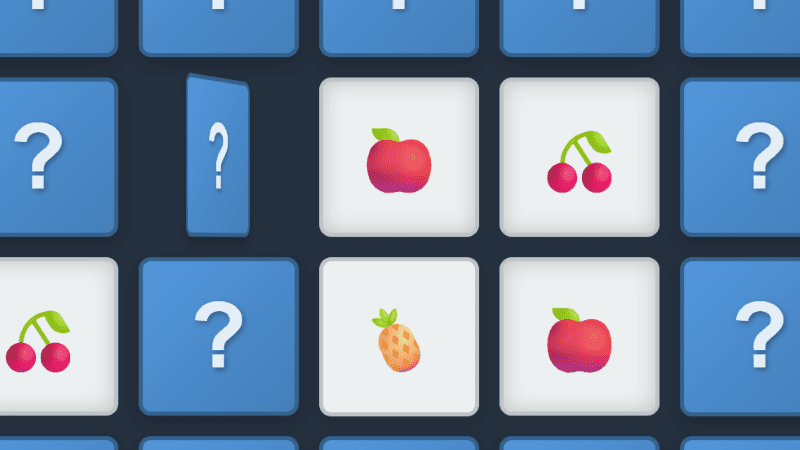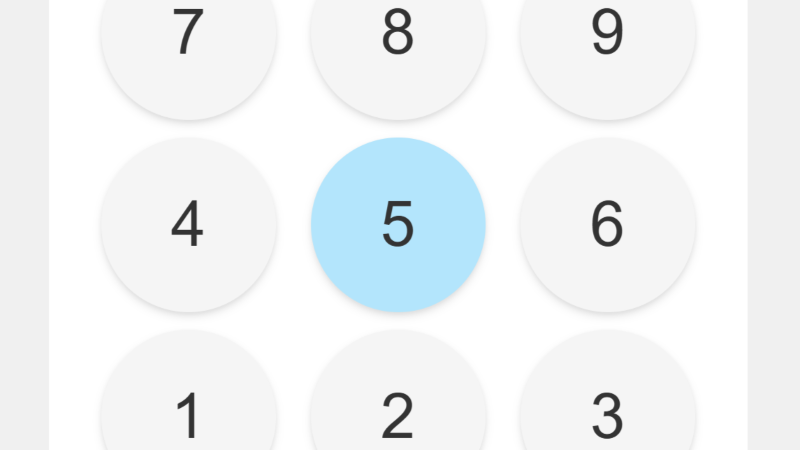Memory Lights
Watch and repeat the light sequence.
How to Play Memory Lights
Welcome to Memory Lights! This engaging memory game challenges your ability to remember and reproduce increasingly complex sequences of colored lights and sounds. Inspired by the classic Simon game, it's perfect for testing and improving your short-term memory and concentration skills.
Basic Rules
- The Goal: Successfully repeat back sequences of colored lights that grow longer with each round you complete.
- Starting the Game: Press the "Start Game" button to begin your first sequence challenge.
- Watching Sequences: The game displays sequences by lighting up colored buttons and playing corresponding musical tones.
- Your Turn: After the sequence finishes, click or tap the colored buttons in the exact same order you observed.
- Progression: Successfully completing a sequence adds one more color to the next round, gradually increasing difficulty.
- Game Over: Making any mistake in the sequence order immediately ends the game.
- Scoring: Your score equals the number of rounds you complete successfully - try to beat your personal best!
Tips for Beginners
- Use Both Senses: Pay attention to both the visual lights and the audio tones. Using multiple senses strengthens memory formation.
- Create Patterns: Look for patterns within sequences - repeated colors, alternating patterns, or musical progressions.
- Chunk Information: Break longer sequences into smaller groups of 3-4 colors to make them easier to remember.
- Practice Repetition: Mentally repeat the sequence as it plays to reinforce memory encoding.
- Stay Focused: Eliminate distractions and give the sequence your complete attention during playback.
- Take Your Time: There's no time pressure when inputting your response, so think carefully before each button press.
Advanced Strategies
- Musical Memory: Learn to recognize the unique tone each color produces. Audio memory can be stronger than visual for some players.
- Spatial Mapping: Create mental spatial relationships between button positions to supplement color memory.
- Rhythm Recognition: Pay attention to the timing and rhythm of sequence playback - this can provide additional memory cues.
- Visualization Techniques: Create vivid mental images or stories connecting the sequence colors in memorable ways.
- Progressive Building: As sequences grow, focus on remembering the new addition while reinforcing the existing pattern.
- Stress Management: Stay calm under pressure. Anxiety can significantly impair memory performance in challenging rounds.
Controls & Accessibility
- Mouse/Trackpad: Click on the colored buttons to input your sequence responses.
- Touch Devices: Tap the colored buttons on smartphones and tablets - fully optimized for mobile play.
- Audio-Visual Feedback: Each button produces both a visual light flash and a unique musical tone for multi-sensory experience.
- Start Game Control: Use the central "Start Game" button to begin new games or restart after completion.
- Score Display: Clear feedback shows your current round number and progress through the game.
- Sound Toggle: Option to enable or disable audio cues based on your preferences and environment.
Benefits of Playing Memory Lights
Memory Lights offers excellent cognitive training with applications beyond gaming:
- Working Memory Enhancement: Strengthen your ability to hold and manipulate sequences of information in short-term memory.
- Auditory Processing: Improve recognition and recall of sequential auditory information through musical tone patterns.
- Visual Memory Training: Develop stronger visual sequence memory and spatial pattern recognition abilities.
- Attention and Focus: Build sustained concentration skills essential for academic and professional success.
- Multi-Sensory Integration: Practice combining visual and auditory information for enhanced memory formation.
- Cognitive Flexibility: Adapt to increasing complexity and maintain performance under growing cognitive demands.
- Sequential Learning: Improve ability to learn and recall ordered information, useful for language, music, and procedures.
- Stress Tolerance: Build resilience and maintain accuracy while under the pressure of potential failure.
The Legacy of Simon and Electronic Memory Games
Memory Lights carries forward the proud tradition established by Simon, the groundbreaking electronic memory game launched in 1978 by Milton Bradley. Created by Ralph H. Baer and Howard J. Morrison, Simon became an instant cultural phenomenon that defined a generation's understanding of electronic entertainment.
Ralph Baer, often called "the Father of Video Games," was also instrumental in creating the first home video game console, the Magnavox Odyssey. Simon's distinctive UFO-like circular design and its challenging pattern-matching gameplay made it a must-have toy of the late 1970s and 1980s, selling millions of units worldwide.
The game's success spawned numerous variations and imitators, but the core concept of testing memory through visual and auditory sequences has proven timeless. Simon demonstrated that electronic games could be both educational and entertaining, paving the way for countless memory training applications in education, therapy, and cognitive research.
Cognitive Science and Memory Training
Memory Lights incorporates principles from cognitive psychology research on working memory and sequence learning. The dual-coding approach - combining visual and auditory information - leverages what researchers call the "modality effect," where information processed through multiple sensory channels is better remembered than single-source information.
Studies have shown that sequence memory training can improve not only performance on similar tasks but may also enhance broader cognitive abilities including attention control and processing speed. The progressive difficulty structure ensures optimal challenge levels that promote skill development without overwhelming cognitive capacity.
The immediate feedback provided by the game creates an ideal learning environment where players can quickly identify errors and adjust their strategies, leading to more effective skill acquisition.
Frequently Asked Questions
Should I focus more on the lights or the sounds?
Use both! The most effective approach combines visual attention to the colored lights with careful listening to the unique musical tones. This dual-sensory encoding creates stronger, more reliable memories.
What's a good score for beginners?
Reaching round 5-7 is excellent for new players. With practice, many people can achieve rounds 10-15. Scores above 20 demonstrate exceptional memory skills and significant training.
How can I improve my performance?
Practice regularly with short sessions (5-10 minutes), focus completely during sequence playback, use chunking strategies for longer sequences, and try to identify patterns or create mental stories connecting the colors.
Is there a maximum sequence length?
Theoretically, the game can continue indefinitely, but practical human memory limits mean most players reach their ceiling somewhere between rounds 15-25, though exceptional players may achieve higher scores.
Can this game help with memory in daily life?
Yes! Regular practice can improve working memory capacity, attention control, and sequence processing - skills that transfer to remembering phone numbers, following multi-step instructions, and other everyday memory tasks.


